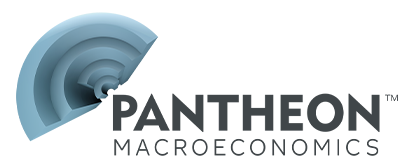US Publications
Below is a list of our US Publications for the last 6 months. If you are looking for reports older than 6 months please email info@pantheonmacro.com, or contact your account rep
Please use the filters on the right to search for a specific date or topic.
Boosted marginally by Boeing; expect a further uplift from Hurricane Helene ahead.
Samuel TombsUS
- Payrolls likely rose by only 135K in September, constrained by slow private and government hiring.
- Initial claims have been distorted by iffy seasonals; unemployment won’t track the drop in continuing claims.
- October private job growth will be close to zero, if strikes at Boeing and the ports continue next week.
Samuel TombsUS
Indicators with a better track record paint a much weaker picture.
Samuel TombsUS
- We look for a small rise in initial claims to about 225K, from 218K, driven by rolling furloughs at Boeing.
- Storm Helene likely will lift claims to about 250K soon; port-related disruption may add to the pick up.
- The end of the student loan payment “on-ramp” will only hit annual consumption by 0.15% at most.
Samuel TombsUS
Still depressed; core goods prices likely to keep falling.
Oliver Allen (Senior US Economist)US
- Supply chains have enough flex for a one-week ports strike to have only a negligible impact on GDP...
- ...But a more protracted walkout would weigh greatly on the manufacturing and retail sectors.
- Manufacturing and residential construction payrolls both look likely to decline in the coming months.
Samuel TombsUS
- Only NFIB, Conference Board and Indeed data predict jobs growth better than a
six-month average.
- Collectively, these indicators point to a 115K rise in September private payrolls and a 135K in total NFP.
- The unemployment rate likely edged up; the recent fall in continuing claims is not indicative of the trend.
Samuel TombsUS
